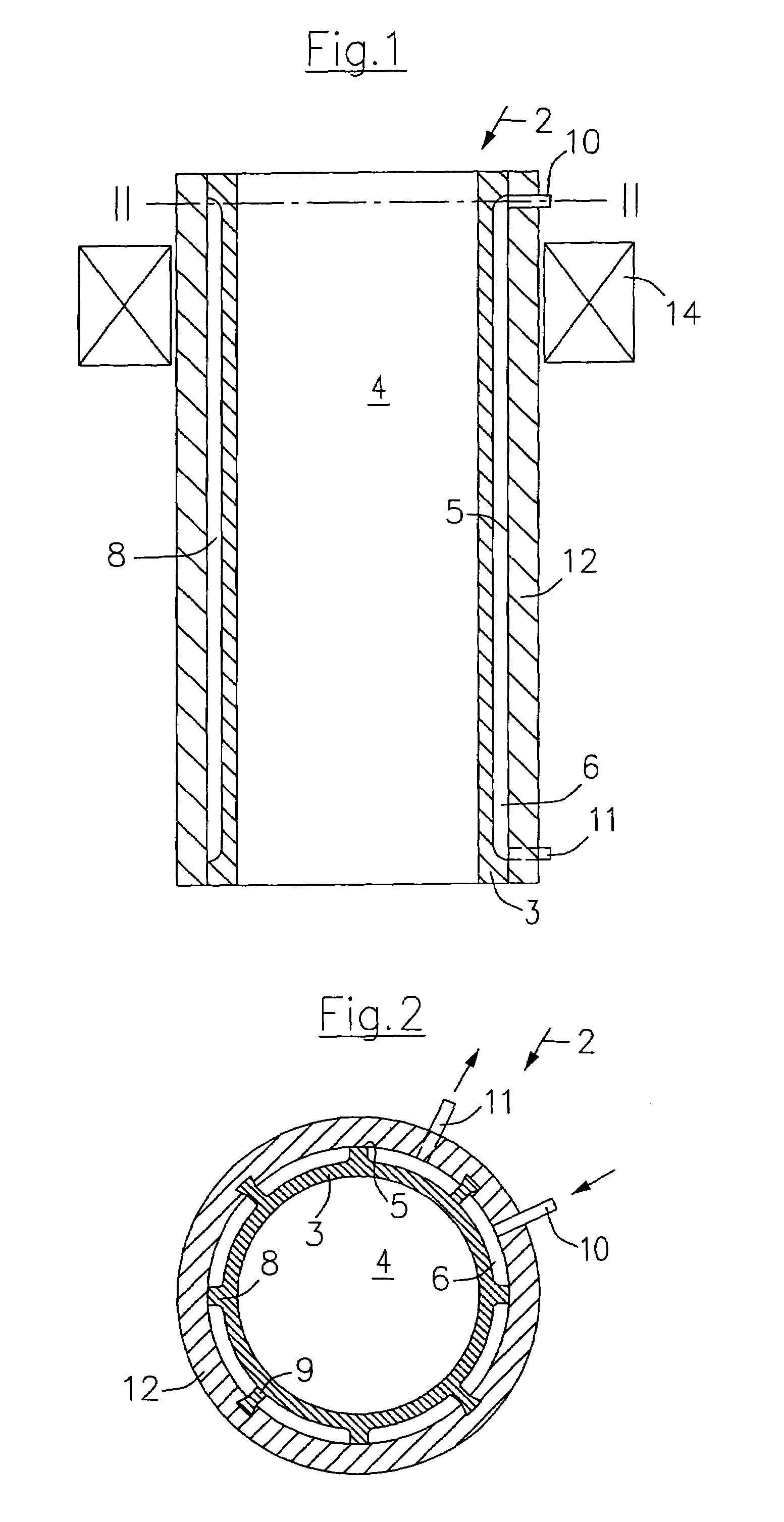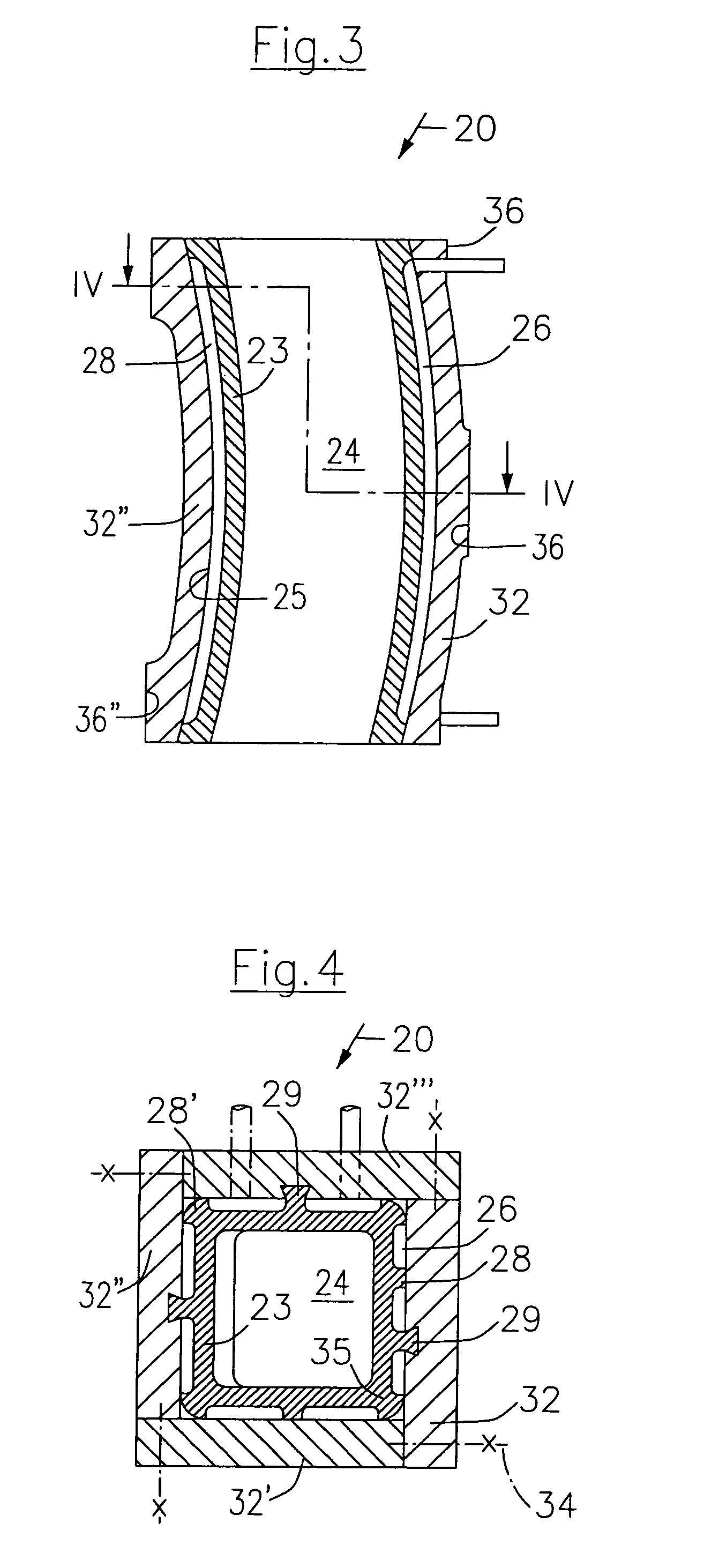Tubular mould for continuous casting
a technology of continuous casting and tubular moulds, which is applied in the direction of permanent magnets, electromagnets, etc., can solve the problems that the service life of the moulds also constitutes an important cost factor for the economic efficiency of the continuous casting plant, and achieve the effect of preventing electrolytic corrosion
- Summary
- Abstract
- Description
- Claims
- Application Information
AI Technical Summary
Benefits of technology
Problems solved by technology
Method used
Image
Examples
Embodiment Construction
[0030]In FIGS. 1 and 2, a continuous casting mould for round billet or bloom strands is depicted by 2. A copper tube 3 forms a mould cavity 4. Provided at the outer side of the copper tube 3, which side forms the tube outer lateral surface 5, is water-circulation cooling for the copper tube 3. This water-circulation cooling comprises cooling ducts 6 distributed over the entire circumference and substantially over the entire length of the copper tube 3. The individual cooling ducts 6 are delimited by supporting and connecting ribs 8 and 9, respectively, an additional task of which is to guide the cooling-water circulation into the cooling ducts 6 from a water supply line 10 to a water discharge line 11. 12 depicts a supporting shell which surrounds the copper tube 3 over the entire circumference and over the entire length and supports the copper tube 3 at the tube outer lateral surface 5 via the supporting ribs 8. The connecting ribs 9 connect the copper tube 3 to the supporting shel...
PUM
| Property | Measurement | Unit |
|---|---|---|
| thickness | aaaaa | aaaaa |
| thickness | aaaaa | aaaaa |
| thickness | aaaaa | aaaaa |
Abstract
Description
Claims
Application Information
 Login to View More
Login to View More - R&D
- Intellectual Property
- Life Sciences
- Materials
- Tech Scout
- Unparalleled Data Quality
- Higher Quality Content
- 60% Fewer Hallucinations
Browse by: Latest US Patents, China's latest patents, Technical Efficacy Thesaurus, Application Domain, Technology Topic, Popular Technical Reports.
© 2025 PatSnap. All rights reserved.Legal|Privacy policy|Modern Slavery Act Transparency Statement|Sitemap|About US| Contact US: help@patsnap.com



